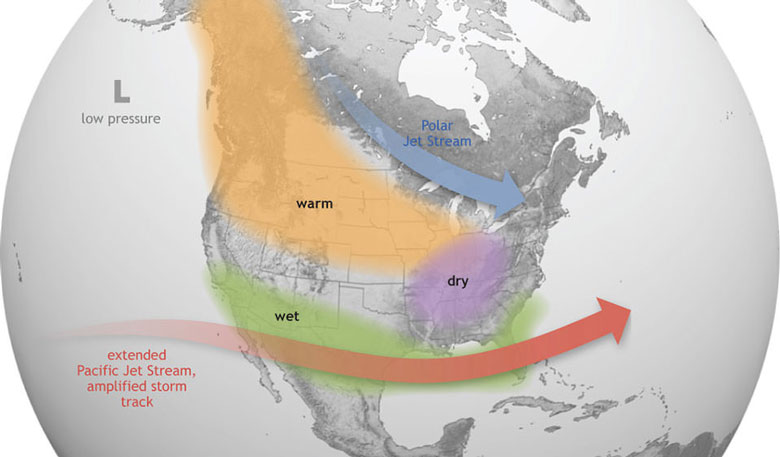Mainers cherish the ocean for its beauty, bounty, and mystery. Yet the ocean’s influence extends far beyond our coastlines, impacting every living thing on Earth, everywhere. It plays a crucial role in shaping the planet’s climate and weather patterns, influencing everything from local temperatures to global atmospheric conditions.
To grasp how the ocean affects these patterns, we need to explore its key processes: heat distribution, ocean currents, and ocean-atmosphere interactions.
A primary way the ocean influences climate is through its ability to absorb, store, and redistribute heat. Water has a high heat capacity compared to land, meaning it can retain more heat energy with minimal temperature changes. This makes the ocean a thermal buffer, moderating temperature fluctuations over both short and long periods.
Coastal regions, for example, often have milder temperatures than inland areas because the ocean regulates heat. During summer, the ocean absorbs excess heat, and in winter, it releases this stored heat, reducing temperature extremes.
El Niño involves warming surface waters in the central and eastern Pacific Ocean, disrupting normal weather patterns…
Ocean currents, which are large-scale flows of seawater driven by wind, Earth’s rotation, and water density differences, also play a vital role in heat distribution. These currents transfer thermal energy from the equator to higher latitudes.
The Gulf Stream, a warm current originating in the Gulf of Mexico, flows across the Atlantic Ocean towards Europe, significantly warming Western Europe’s climate. In contrast, cold currents like the California Current can cool coastal regions and affect local weather.
Ocean currents also impact weather patterns and climate phenomena. For instance, the El Niño-Southern Oscillation (ENSO) cycle includes El Niño and La Niña phases.
El Niño involves warming surface waters in the central and eastern Pacific Ocean, disrupting normal weather patterns and leading to extreme weather events such as heavy rainfall, droughts, and altered storm tracks.

La Niña, on the other hand, is characterized by cooler-than-average sea surface temperatures in the same region, often causing opposite effects like increased precipitation in some areas and droughts in others.
NOAA predicts a 66% chance of La Niña conditions emerging between September and November, potentially influencing wetter and warmer conditions in the Northeast this fall and winter.
The interaction between the ocean and the atmosphere is also crucial. The exchange of heat, moisture, and gases between the ocean and atmosphere impacts weather systems and climate.
For example, evaporation from the ocean surface contributes to cloud formation and precipitation. Warm ocean waters increase evaporation rates, adding more moisture to the atmosphere, which can intensify storms and alter precipitation patterns.
Hurricanes and typhoons, which form over tropical oceans, derive their energy from warm waters. The current record warm waters in over 80% of the tropical Atlantic and Caribbean Sea are expected to fuel storm systems for the remainder of the 2024 season.
In summary, the ocean’s impact on Earth’s climate and weather is profound and multifaceted. Its capacity to store and redistribute heat, drive ocean currents, and interact with the atmosphere shapes regional climates, influences weather patterns, and moderates temperature extremes.
The ocean is integral to life on Earth, and understanding its influence helps us appreciate its role in Maine and beyond.
Jennifer Seavey is chief programs officer with Island Institute, publisher of The Working Waterfront. She may be contacted at jseavey@islandinstitute.org.





